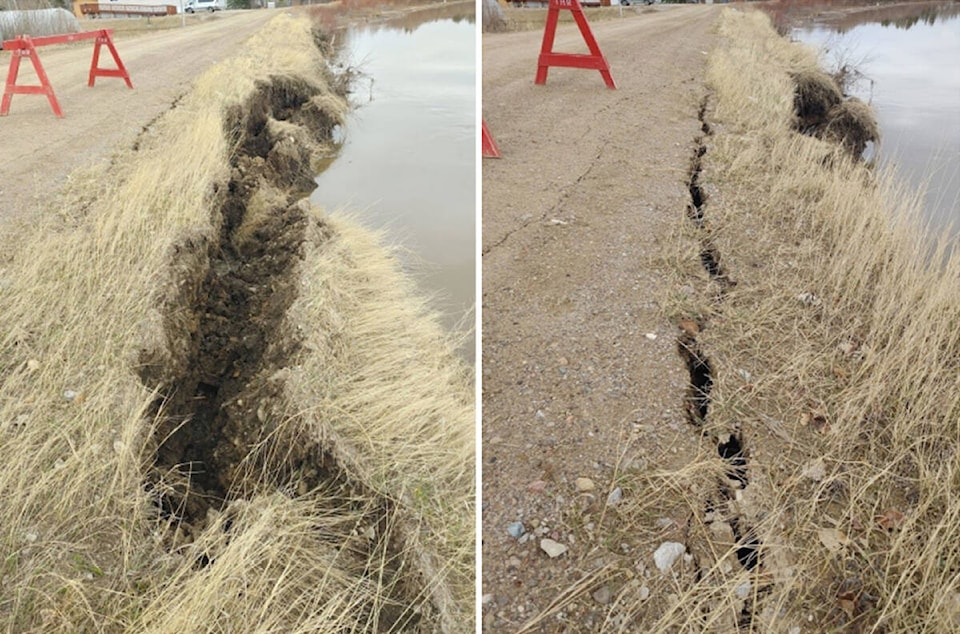The Town of Hay River is seeking funding from the federal government to address shoreline erosion on Alaska Road near the West Point First Nation band office.
Council approved a motion from town administration to apply for $1.2 million through the federal Disaster Mitigation and Adaptation Fund (DMAF) during the Nov. 8 council meeting.
Glenn Smith, senior administrative officer and acting director of public services, said that the town has been working closely with Stantec Engineering and the West Point First Nation and is looking to acquire a 100-metre sheet piling wall to build along the shoreline.
This year provided an example of ice floes from spring breakup jamming against the Alaska Road berm, which has led to significant damage and weakening of the roadway.
“The result of the erosion is that the berm/road is sloughing away and in danger of falling into the west channel,” according to the Nov. 8 memorandum.
“The cracking on the road surface has also become progressively worse through the summer season with additional sections threatening to break off and cause further damage to the road surface.”
Because of the partnership with the First Nation, the municipality is hoping to get 100-per-cent funding. The DMAF program provides a stream of one-million to $20 million projects related to natural disaster and climate change.
The project can receive full federal funding if it includes a partnership with Indigenous communities.
Smith said finding a solution to the problem remains a “top priority” given that “we are actually starting to see infrastructure fail.”.
Last year the town received some federal funding support through the Climate Change Preparedness in the North (CCPN) program from Crown-Indigenous Relations and Northern Affairs. That money went toward studying and planning in that area as well as the purchase of a an aqua-dam at the nearby West Channel to control flooding.
In October, the town administration presented its plan for capital expenditures over the next 10 years with next year’s costs to amount to about $16 million.
Part of the 2022 projects identified include the shoreline mitigation work.
Kenneth Cayen, Chief of the West Point First Nation, which is directly impacted by the shoreline erosion and area flooding, said in an Oct. 1 letter to the Town of Hay River that it would support the sheet piling wall along the road/river side of the berm in the area with reconstruction of the road afterwards rather than relocating the road.
“This is the best option by Stantec and the Town of Hay River and our West Point First Nation agrees that this solution would provide better long-term disaster protection for our community,” he wrote.
